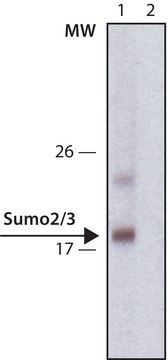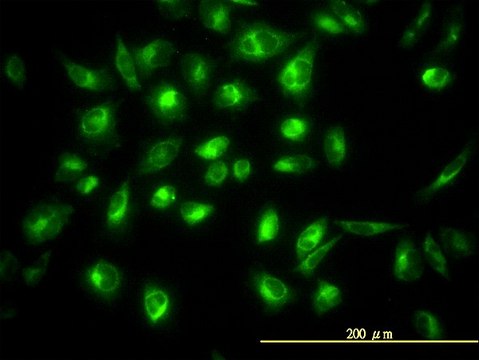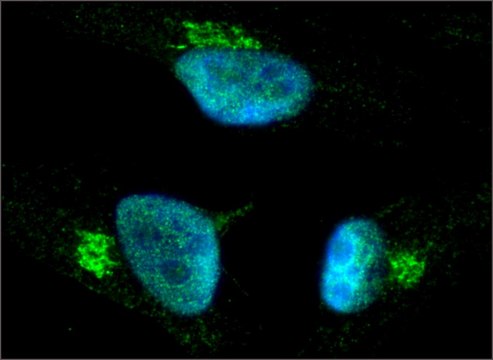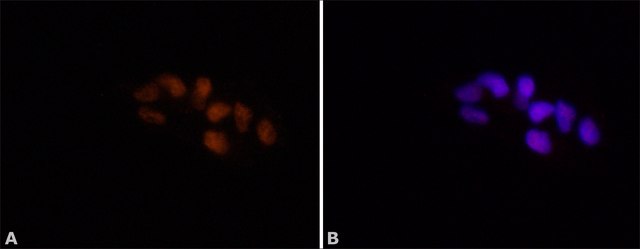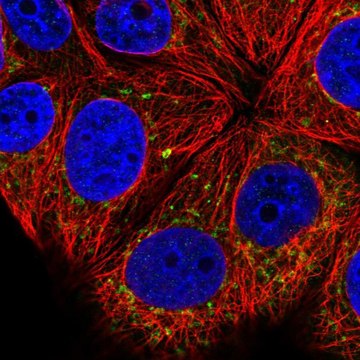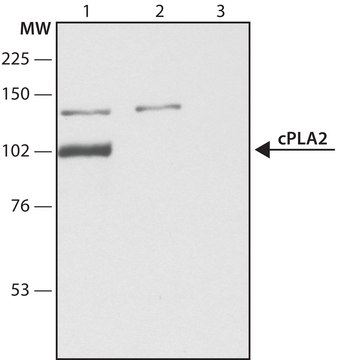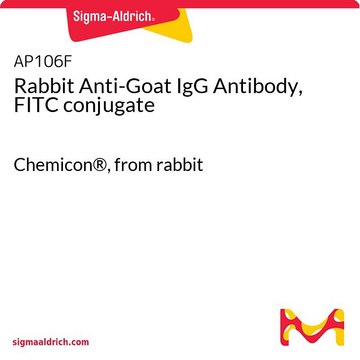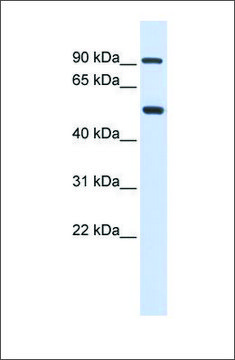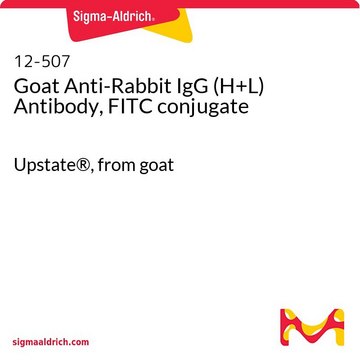SAB4200427
Anti-COG8 (C-terminal) antibody produced in rabbit
~1.0 mg/mL, affinity isolated antibody
别名:
Anti-CDG2H, Anti-COG complex subunit 8, Anti-Component of oligomeric golgi complex 8, Anti-conserved oligomeric Golgi complex subunit 8, Anti-conserved oligomeric golgi complex component 8, Anti-dependent on RIC1, AntiDOR1
登录查看公司和协议定价
所有图片(4)
About This Item
UNSPSC代码:
12352203
NACRES:
NA.41
推荐产品
生物来源
rabbit
偶联物
unconjugated
抗体形式
affinity isolated antibody
抗体产品类型
primary antibodies
克隆
polyclonal
表单
buffered aqueous solution
分子量
antigen ~70 kDa
种属反应性
human
浓度
~1.0 mg/mL
技术
immunoprecipitation (IP): 5-10 μg using lysates of human HEK-293T cells
indirect immunofluorescence: 0.5-1.0 μg/mL using using human HeLa cells
western blot: 1-2 μg/mL using whole extracts of human HEK-293 cells
UniProt登记号
运输
dry ice
储存温度
−20°C
靶向翻译后修饰
unmodified
基因信息
human ... COG8(84342)
一般描述
Conserved oligomeric Golgi complex 8 (COG8), also known as DOR1 or CDG2H, is a member of the conserved oligomeric Golgi (COG) complex. COG complex is composed of eight distinct subunits organized as heterotrimeric groups namely Cog2-Cog3-Cog4 and Cog5-Cog6-Cog7. They are interlinked by the dimeric group comprising Cog1 and Cog8.
特异性
Anti-COG8 (C-terminal) recognizes human COG8.
免疫原
synthetic peptide corresponding to the C-terminal region of human COG8, conjugated to KLH
应用
Anti-COG8 (C-terminal) antibody produced in rabbit may be used in:
- immunoblotting
- immunoprecipitation
- immunofluorescence
生化/生理作用
COG complex, is an evolutionarily conserved multi-subunit protein complex that regulates membrane trafficking and maintenance of Golgi glycosylation machinery in eukaryotic cells. Mutations in the COG8 gene cause congenital disorder of glycosylation, type IIh, a disease that is characterized by under-glycosylated serum proteins, and whose symptoms include severe psychomotor retardation, failure to thrive, seizures, and dairy and wheat product intolerance.
外形
Solution in 0.01 M phosphate buffered saline pH 7.4, containing 15 mM sodium azide
储存及稳定性
For continuous use, store at 2-8 °C for up to one month. For extended storage freeze in working aliquots. Repeated freezing and thawing is not recommended. If slight turbidity occurs upon prolonged storage, clarify the solution by centrifugation before use. Working dilution samples should be discarded if not used within 12 hours.
免责声明
Unless otherwise stated in our catalog or other company documentation accompanying the product(s), our products are intended for research use only and are not to be used for any other purpose, which includes but is not limited to, unauthorized commercial uses, in vitro diagnostic uses, ex vivo or in vivo therapeutic uses or any type of consumption or application to humans or animals.
未找到合适的产品?
试试我们的产品选型工具.
储存分类代码
10 - Combustible liquids
闪点(°F)
Not applicable
闪点(°C)
Not applicable
法规信息
常规特殊物品
Modeling congenital disorders of N-linked glycoprotein glycosylation in Drosophila melanogaster
Frappaolo A, et al.
Frontiers in Genetics, 9, 436-436 (2018)
COG8 deficiency causes new congenital disorder of glycosylation type IIh
Kranz C, et al.
Human Molecular Genetics, 16(7), 731-741 (2007)
Role of the conserved oligomeric Golgi (COG) complex in protein glycosylation
Smith RD and Lupashin VV
Carbohydrate Research, 343(12), 2024-2031 (2008)
Amrita Khakurel et al.
Molecular biology of the cell, 32(17), 1594-1610 (2021-06-24)
The Golgi complex is a central hub for intracellular protein trafficking and glycosylation. Steady-state localization of glycosylation enzymes is achieved by a combination of mechanisms involving retention and recycling, but the machinery governing these mechanisms is poorly understood. Herein we
Comparative analyses of the Conserved Oligomeric Golgi (COG) complex in vertebrates
Quental R, et al.
BMC Evolutionary Biology, 10(1), 212-212 (2010)
我们的科学家团队拥有各种研究领域经验,包括生命科学、材料科学、化学合成、色谱、分析及许多其他领域.
联系技术服务部门